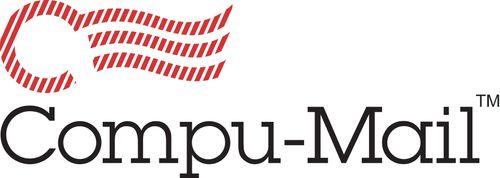Direct mail marketing in education serves as a valuable tool for schools, colleges, and universities to engage with prospective students, alumni, and donors. It allows educational institutions to showcase their unique offerings, academic programs, and campus culture to attract prospective students. Additionally, it provides an opportunity to communicate with alumni about fundraising initiatives, events, and updates.
By leveraging direct mail marketing, educational institutions can strengthen relationships with their communities, increase enrollment, and enhance fundraising efforts. This guide offers practical advice and best practices to help schools, colleges, and universities maximize the impact of their direct mail campaigns in reaching their goals.
What is Higher Education Direct Mail Marketing?
Higher education marketing must offer digital and traditional campaign techniques to attract its target audience thoroughly. It should be wary of diverse groups and designed to cater to all of them, from faculty and staff to students and parents. Marketing for higher education strategies should simultaneously be broad-based and individualized.
Here, we’ll focus on direct marketing efforts in a highly digital environment. We’d also be discussing various tools that can be employed to improve branding, messaging, and reach.
The Power of Education Direct Mail
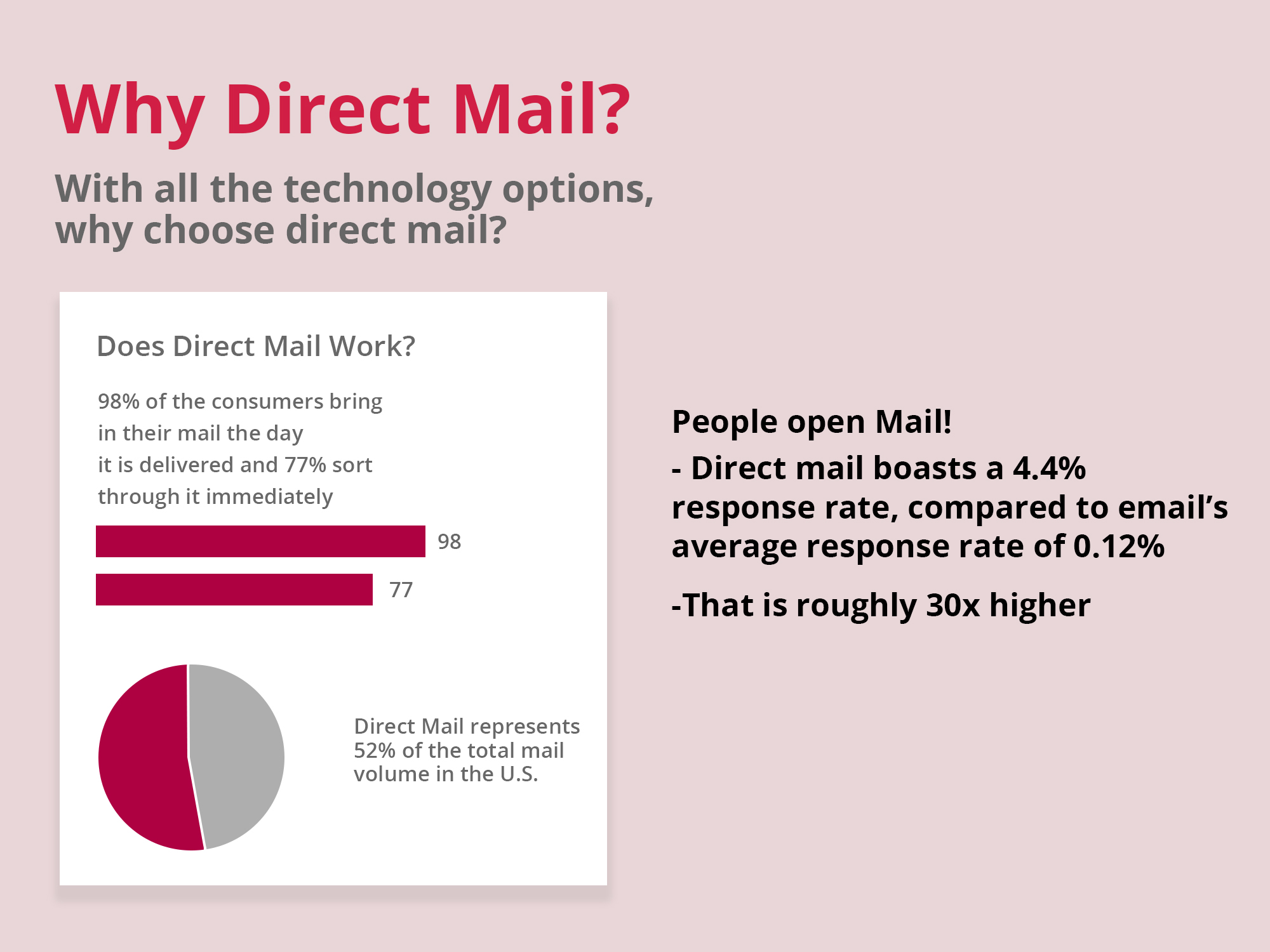
Direct mail for further education marketing is a highly targeted and personalized way to reach potential students. Here are some benefits of higher education direct marketing:
-
Targeted Marketing
Direct marketing to schools and universities allows you to reach specific groups of prospective students based on demographics, geographic location, and interests. This helps you tailor your messaging and increase response rates.
-
Personalized Messaging
Education direct mail lets you personalize your messaging with the recipient’s name and other relevant information. This creates a more personalized experience, increasing engagement and the chances of converting prospects into students.
-
Tangible Impact
Unlike digital marketing, direct mail to college students creates a tangible impact on the recipient. Prospective students can hold your message in their hands, making it more memorable and increasing their chances of acting on it.
Direct Mail Formats for Educational Institutions
When planning a direct mail campaign for educational institutions such as schools, colleges, and universities, it’s essential to know the popular mail formats used. Here are some of the most commonly used mail formats in the US and their dimensions.
-
Half-Fold Mailer
The half-fold mailer is a straightforward and popular format. It’s a two-sided mailer folded in half and printed in color. The typical dimensions for a half-fold mailer are 8.5” x 11”, but they can vary depending on the specific needs and printing capabilities.
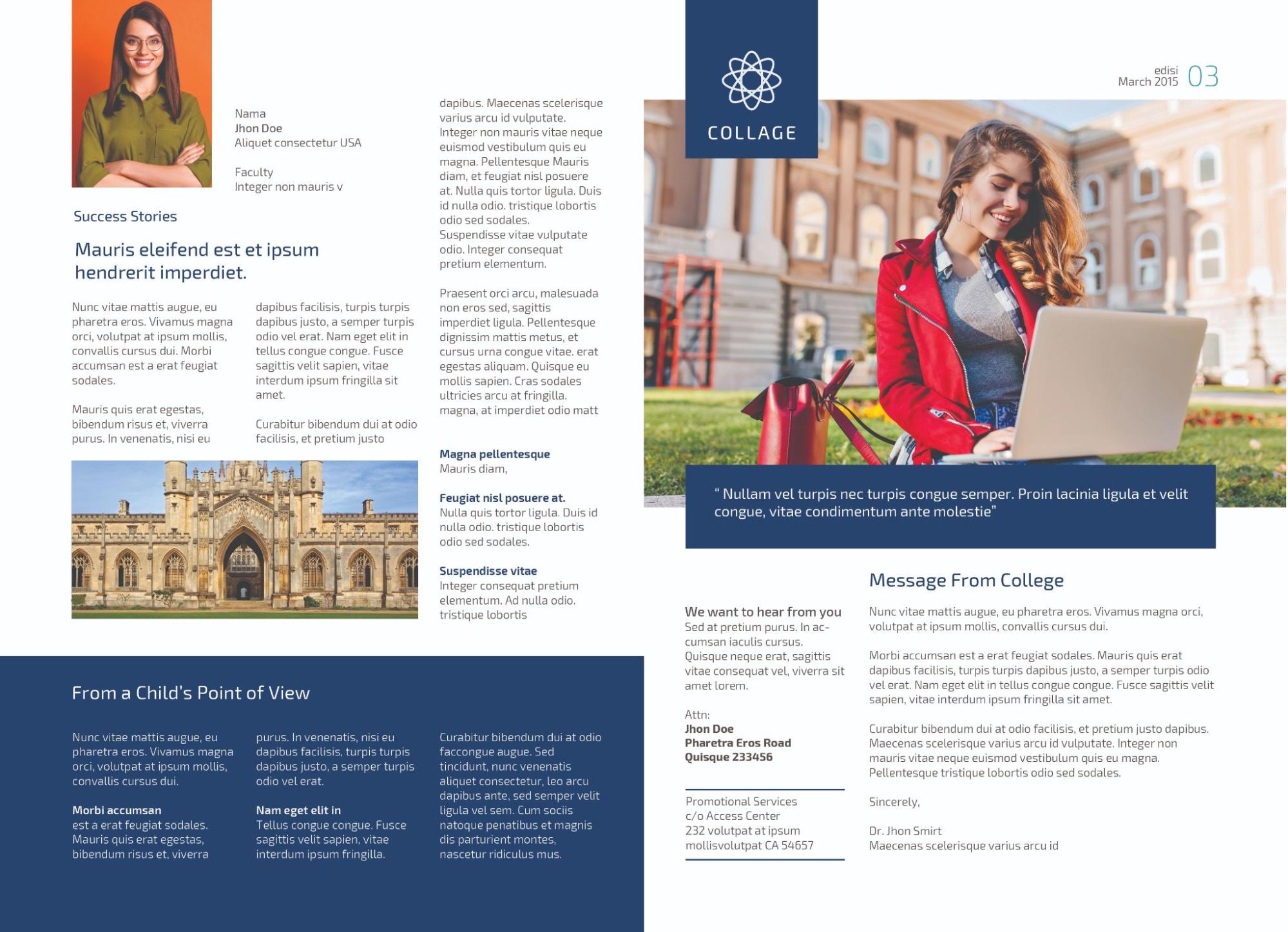
-
Newsletter Brochure
Universities often use newsletter brochures printed in full color. The brochure is typically 11” x 17” when opened, allowing for much information. When closed or folded, the dimensions reduce to 8.5” x 11”, making it ideal for direct mail.
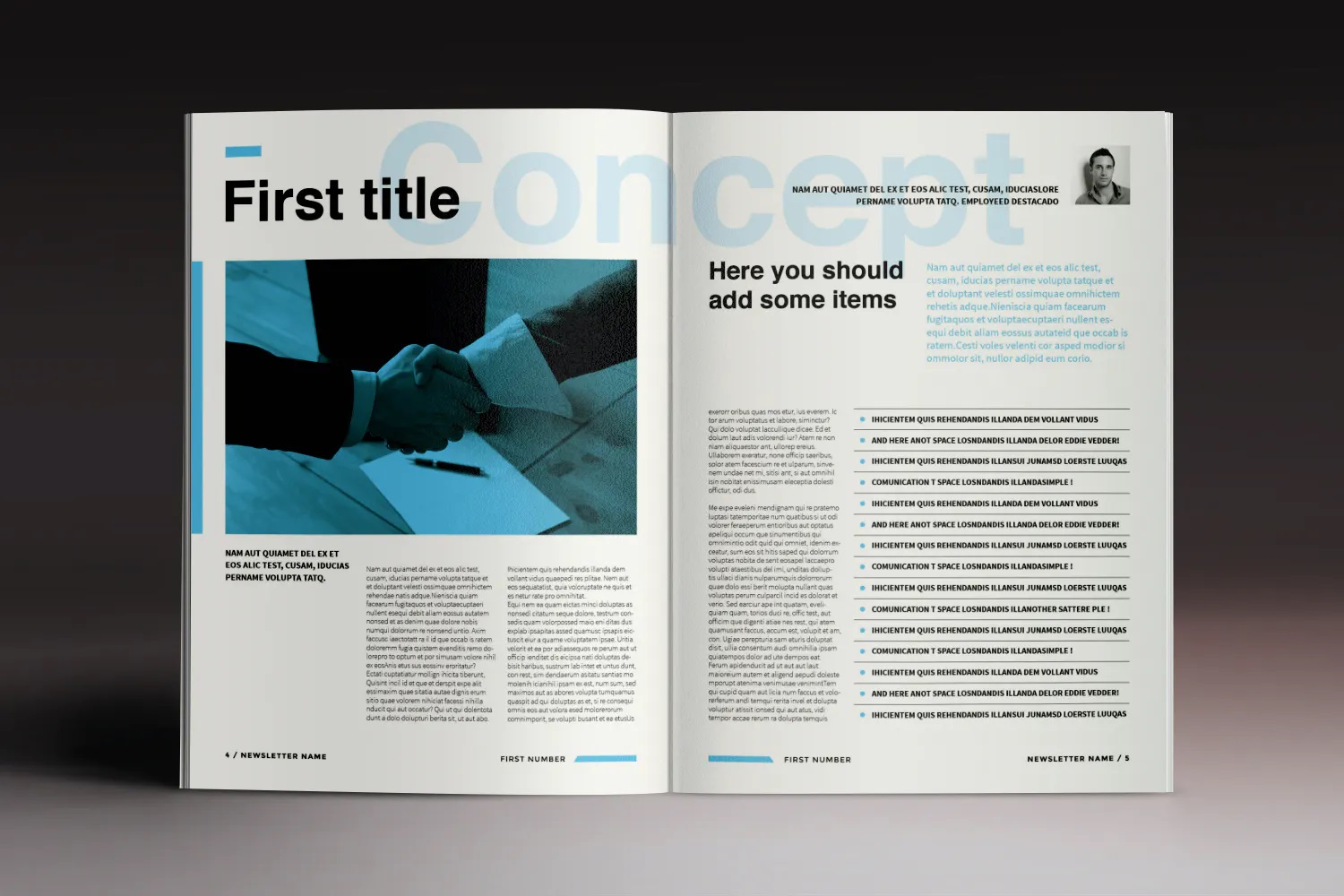
-
Postcard Mailer
Postcard mailers are best for short content, making them perfect for sending out seasonal greetings like Christmas cards. The postcards allow for pictures, making them more visually appealing and customizable. A typical two-sided postcard’s dimensions are 8.5” x 5.5”.

-
Full-Color Letter & Envelope Package
Full-color letter and envelope packages are commonly used by schools, colleges, and universities. The two-sided letter is typically 8.5” x 14” and printed in full color. The envelope provides more privacy and adds a professional touch.
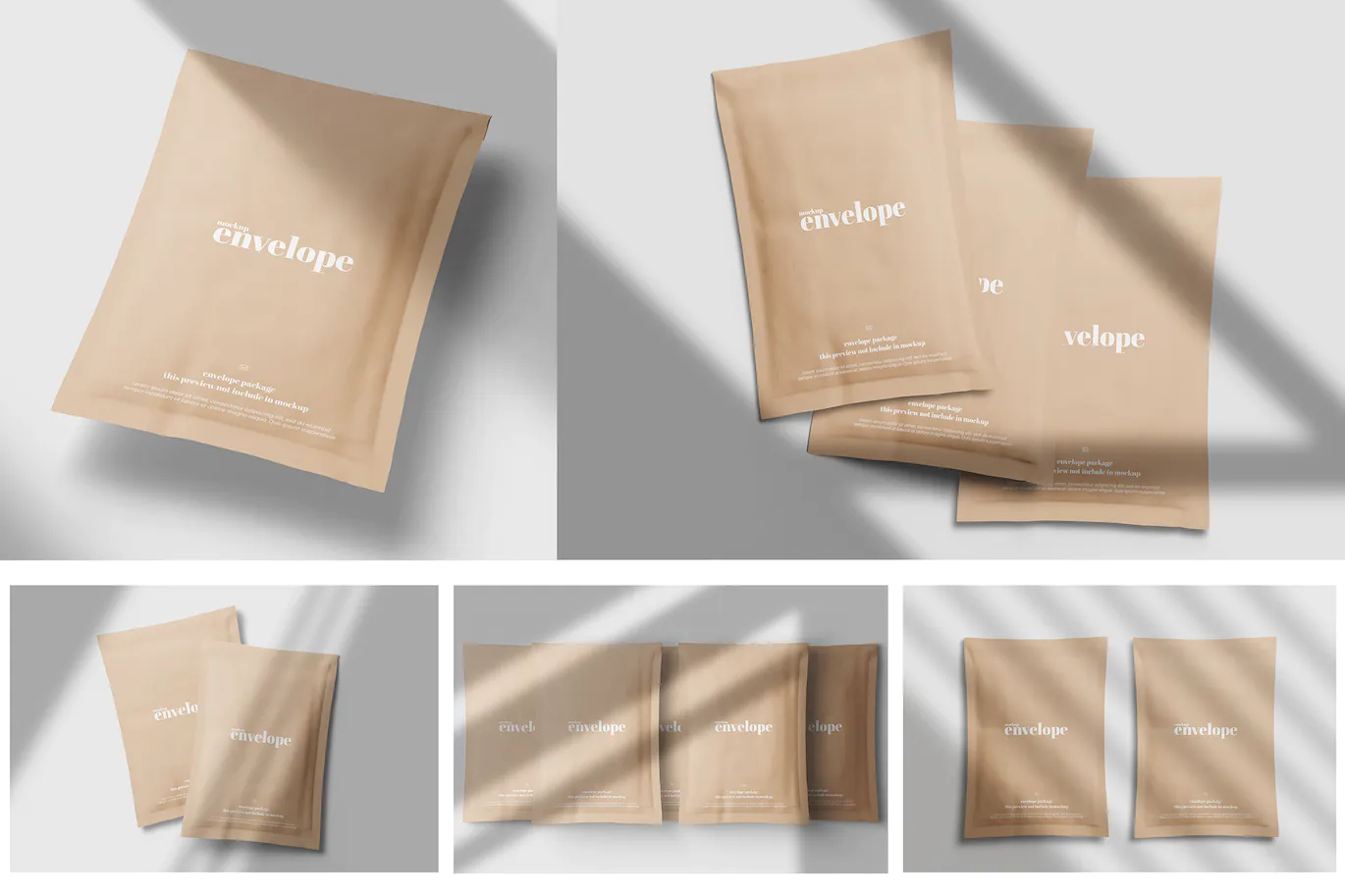
Advanced Direct Mail Campaign Ideas For Educational Institutions
While schools must maintain a solid digital presence, launching email campaigns are no longer that effective. With floods of digital promotions flooding students’ emails, your campaigns might get ignored or go straight to the spam folder. This is not the case with direct mail, which has a proven track record of response generation.
Direct mail creates a far more professional tone every educational institution wishes to convey. Enticing your target audience to check your institution out and eventually enroll is more likely to happen with print media. Direct mail is tangible and thus has a higher shelf-life than other online marketing channels. It can set you apart from the competition, especially those who have opted for a strictly digital approach.
So what are the digital marketing techniques that you can employ? Here are a few that we think would work:
-
Video Mailers
Although video mailers denote a significant increase in your direct marketing budget, these electronic promotional tools are designed to outshine the competition seriously. They work like digital brochures and are guaranteed to maximize impact and engagement with your audience.
Video mailers are the next big thing in higher education direct marketing, with the University of Notre Dame trailblazing the strategy in a recent campaign. Although the target audience was donors instead of prospective students, the strategy would work for the latter. Video mailers present a comprehensive and innovative way for your institution to highlight its facilities and curriculum in a more exciting way. It is only a matter of time before video mailers would go mainstream.
-
Augmented Reality
In a time when people may be fatigued from the same digital messaging over and over again, print and more creative uses of digital can offer some reprieve.
Whatever videos you may promote on social media or in emails, consider promoting via print as well.
You can use technology like Augmented Reality to offer virtual tours, share student testimonials, and anything else to show what makes your school feel like home, directly from a flat print piece. A cost-effective alternative to video mailers, Augmented or Virtual Reality can be coupled with your direct mail to create a one-of-a-kind experience for prospective students. All it takes is a Paper VR box in the mail with a link or QR code to the VR-supported content.
Check out “Creating Augmented Reality Mailers” to learn how to easily make your mailers come alive with video using Augmented Reality through AReveryware.
-
Use Webkeys
A Webkey is a USB device that can be programmed to direct the prospective student to a school/college’s website landing page and even record necessary information after being plugged into a computer. A Webkey is similar to a USB flash drive but cost-effective and ideal for direct mail campaigns. It enhances the user’s convenience and provides easy access to your landing page/website.
Use Exploding Pages
Using exploding pages is an effective method for getting the desired result for a direct mail campaign. Exploding pages may look like regular mail, but they can expand to reveal more information crammed inside them. They are ideal for direct mail campaigns because they stand out from regular mail and fold up to flat mail but double in size once opened. Furthermore, the unique nature of its design seldom fails to capture the attention of prospective students.
-
Use Pop-Up Cubes
Pop-up cubes are a fun way to reach prospective students. They are unique and stand out from the usual flat cards. Pop-up cubes may look unprofessional to some, so using them seasonally during the holidays is safer. It is also the perfect time to run campaigns for educational institutions.
-
Use Pop-Up Houses
Pop-up houses are another sure-shot way of grabbing the attention of those who receive them. The University of Georgia has used pop-up house cards and found them very effective in grabbing the receiver’s attention. Pop-up house cards are fun, so they should be used that way and not out of context.
-
Use Extended Hidden Panels
Hidden panels make direct mail pieces more interesting. Pulling one tab reveals more information and creates a sense of excitement inside the receiver. They are not too fun that they may seem unprofessional, making them a safe and effective alternative to pop-up-type cards.
-
Combining Digital and Print
Combining digital and print mediums to create a dynamic hybrid experience is still the best way to go. Since students are part of the younger generation, they are pretty internet savvy and would love a fun, interactive experience. There are plenty of ways to do this. For instance, you can design a brochure with a QR code that leads to a video presentation about the school.
By incorporating both digital and traditional media into your direct mail design; you can reduce expenses by eliminating the need for extra print materials. Furthermore, leading prospective students to full scale information about your school that can’t be squeezed in a single mail would hopefully persuade better.
-
Direct Mail Templates
A pamphlet, brochure or postcard that informs students on our current situation could help ease their minds and encourage them to enrol. Educating them on the school’s safety precautions, the latest online coursework, or the updated admissions process should help convince them to take the desired action.
Below is an example of a postcard you can use as a template for your upcoming direct mail campaign.
Higher Education Marketing – Long-Term Prospective Student Postcard Example

Higher Education Marketing – Long-Term Prospective Student Postcard Example

Higher Education Marketing – Alumni Giving Letter Example

Direct Mail Marketing for Education
Direct mail marketing for education involves using targeted physical mail to communicate with prospective students, alumni, donors, and other stakeholders within the educational community. Schools, colleges, and universities utilize direct mail to promote their programs, showcase campus life, announce events, solicit donations, and maintain connections with alumni. This marketing approach allows educational institutions to reach specific demographics effectively and personalize their messaging to resonate with recipients.
By employing direct mail marketing strategies, educational institutions can strengthen their brand presence, increase enrollment, engage alumni, and drive fundraising efforts, ultimately contributing to their overall success and growth.
Tips to Create Successful Education Direct Mail Campaigns

To make the most out of higher education direct marketing, follow these tips:
-
Define Your Target Audience
Understanding your target audience is critical to creating effective direct mail campaigns. Demographics, geographic location, and interests are important factors when defining your audience.
-
Compelling Content
The content of your direct mail should be informative, engaging, and highlight your institution’s unique selling points. This could include academic programs, campus life, and student support services.
-
Eye-Catching Design
The design of your direct mail should be visually appealing, on-brand, and grab the recipient’s attention. This will make your message stand out and increase the chances of being read.
-
Include a Call-to-Action
Your direct mail should include a clear call-to-action, such as visiting your institution’s website, attending an event, or scheduling a campus tour. This helps to guide prospects to take the desired action and ultimately convert them into students.
-
Measure Your Success
Measuring the success of your direct mail campaigns is crucial to optimizing your marketing efforts. Tracking response rates and adjusting your strategy accordingly can help you generate a higher ROI.
How Can You Use Direct Mails For Admissions
Direct mail is a powerful tool that can be used for admissions in higher education institutions. With the right approach, you can effectively use direct mail to reach prospective students and increase enrollment rates. Here are some ways to use direct mail for admissions:
-
Introduce your Institution
Direct mail is an excellent way to introduce your institution to prospective students. This could include information about your academic programs, campus life, student support services, and other relevant details. By providing this information in a personalized and visually appealing way, you can pique prospects’ interest and encourage them to learn more.
-
Invite Prospects to Campus Events
Hosting campus events, such as open houses, information sessions, and campus tours, is a great way to engage with prospective students. Use direct mail to invite prospects to these events, provide details about what they can expect, and encourage them to attend. This personal touch can help build relationships with prospects and increase their likelihood of enrolling.
-
Follow Up with Prospects
After a prospect expresses interest in your institution, it’s essential to follow up regularly. Direct mail can be a powerful follow-up tool, providing personalized information and encouragement to help prospects decide. This could include details about the application process, financial aid opportunities, or testimonials from current students.
-
Offer Incentives
Direct mail can offer incentives to prospective students, such as application fee waivers, early application deadlines, or exclusive access to events. These incentives can help motivate prospects to take action, leading to increased enrollment.
-
Segment Your Audience
To make the most out of your direct mail campaigns, it’s essential to segment your audience based on demographics, interests, and behavior. You can increase engagement and response rates by tailoring your messaging and offers to specific groups of prospects.
Importance of Follow-Up Plan in Direct Mails
Having a follow-up plan is crucial when it comes to direct mail campaigns for educational institutions. Although direct mail can be an effective marketing channel, it is not a guarantee that the target audience will receive and read the contents of the mail. There are numerous reasons why prospective students may not notice or respond to your mail, such as misplacement or a lack of time.
It is the responsibility of admission officers and institutions to follow up on their direct mail campaigns, regardless of the reason for the lack of response. Deciding on the best method for following up with your target audience is key. Options include making a phone call, sending another mail piece, or using email to reach them.
Using email as a follow-up method can be advantageous as it is cost-effective, easily automated, and provides an alternative method of communication in case the prospective student missed their direct mail.
The Bottom Line
Educational institutions still rely heavily on direct mail to communicate with prospective students, even in this digital age. The key reason behind this is that direct mail offers a reliable way of reaching the target audience, provided that the addresses are accurate and deliverable. But, having a standardized and verified address database is essential to ensure the success of direct mail campaigns. With the help of advanced address verification tools, institutions can streamline their marketing efforts by verifying addresses in bulk and achieving CASS certification. In today’s marketing landscape, combining direct and digital marketing strategies is critical for maximizing the effectiveness of outreach efforts.
Ready to enhance your direct mail campaign and reach your target audience with accuracy and reliability? Contact Compu-Mail today and streamline your marketing process for better results!
FAQs
Q: How to market higher education?
A: To market higher education, institutions can use various methods such as direct mail, email marketing, social media, search engine optimization, pay-per-click advertising, and events. Identifying the target audience and understanding their needs and preferences is essential to tailor the marketing efforts accordingly.
Q: What is marketing of higher education ?
A: Higher education marketing refers to marketing for colleges, universities, and other educational institutions to prospective students, parents, donors, and other stakeholders. The aim is to attract and retain students, build a strong reputation, and increase revenue and enrollment.
Q: What are higher education direct marketing strategies?
A: Higher education direct marketing strategies involve using direct mail, email marketing, and telemarketing to reach prospective students and parents. Direct mail is an effective method to attract attention and deliver a targeted message. Email marketing is another way to communicate with students and parents, and it can be automated and personalized. Telemarketing involves calling prospects to inform them about the institution’s programs and offerings. These strategies are often combined with digital marketing and events to create a comprehensive marketing plan.
